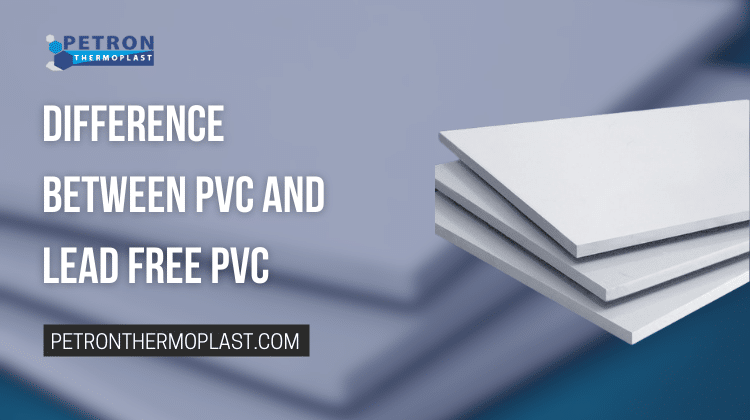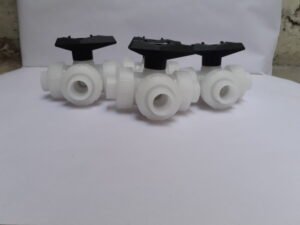Introduction:
PVC (polyvinyl chloride) is a common thermoplastic polymer for industrial and domestic applications. Lead is a toxic heavy metal that has been used in PVC yarn for many years for certain purposes, but its adverse effects on human health and the environment led to the development of PVC alternatives. In this article we will discuss the difference between PVC and lead-free PVC.
What is PVC?
PVC is a thermoplastic polymer widely used in a variety of industries including building materials, medical devices, electrical wiring, and clothing PVC is composed of 57% chlorine, 43% carbon and hydrogen, and is produced by polymerization of vinyl chloride monomers. PVC is a versatile material that can be shaped to have properties such as flexibility, durability and shock resistance. PVC is resistant to water, chemicals and UV rays.
What is Lead Free PVC?
Lead-free PVC is a type of PVC that does not contain any lead. The lack of lead makes lead-free PVC safer and more environmentally friendly than traditional PVC. Lead-free PVC is usually made with calcium, zinc, or tin stabilizers rather than lead-based stabilizers. These stabilizers provide the same properties as lead stabilizers but without adverse health and environmental effects.
Difference Between PVC and Lead-Free PVC
1. Toxicity
The main difference between PVC and lead-free PVC is the presence of lead. PVC yarn generally contains lead stabilizers, which can leach out of the material and cause environmental damage. Lead is a toxic heavy metal that can cause neurological and developmental problems, especially in children. Lead-free PVC eliminates the risk of lead formation.
2. Environmental Impact
PVC is not biodegradable and can persist for hundreds of years in the environment. When burned or improperly disposed of, PVC can release toxic chemicals into the air and water. Lead-free PVC is more environmentally friendly because it contains no lead and can be recycled.
3. Properties
PVC and lead-free PVC can have similar properties, but there are some differences. Lead stabilizers can improve PVC’s properties such as thermal stability, weather resistance, and processability. However, lead-free PVC can achieve similar properties by using additional stabilizers such as calcium, zinc, and tin.
4. Cost
Due to the use of additional stabilizers, lead-free PVC can cost more than conventional PVC. However, the cost difference is not significant, and the benefits of using lead-free PVC outweigh the costs.
Applications of PVC and Lead-Free PVC
PVC (Polyvinyl Chloride) is a widely used plastic that offers advantages such as durability, affordability, and resistance to chemicals and corrosion PVC is used in a variety of applications such as pipes, fittings, valves, and among other industrial equipment.
PVC ball valves are commonly used in applications such as water treatment, chemical treatment, and wastewater treatment. These valves offer excellent corrosion resistance and ease of use, making them popular in many industries.
PVC diaphragm valves are generally used where precise flow control is required. It is commonly used in pharmaceutical, pharmaceutical, and food processing. PVC diaphragm valves are chemically resistant and provide excellent sealing, making them a reliable choice for this application.
Lead-free PVC is becoming increasingly popular due to concerns about the health effects of lead exposure. Lead-free PVC offers the same benefits as conventional PVC but without the additional risk of lead contamination. This makes it a popular choice for applications such as drinking water systems, where lead contamination can pose significant health risks.
Overall, PVC and lead-free PVC are versatile materials that offer a variety of benefits and are commonly used in a variety of industrial applications, including ball valves and diaphragm valves
What Type of PVC is Best?
Choosing the best PVC depends on the specific application and project needs. Some factors to consider when choosing PVC are chemical resistance, high temperature, high pressure, UV stability, and corrosion resistance required for the job.
For example, if PVC is used in plumbing applications it is important to choose high pressure, good chemical resistance PVC pipe that can withstand the harsh chemicals commonly found in plumbing applications On the other hand if PVC will be used in outdoor applications where it is important to choose PVC with UV It is durable and has a good resistance effect so that it can withstand the elements.
It is also important to consider whether to use lead-free PVC or conventional PVC. Lead-free PVC is a safer and more environmentally friendly option than traditional PVC, but it can be more expensive.
Overall, the best PVC is the one that meets the specific requirements of the project and is safe and environmentally friendly. It is important to carefully evaluate the properties of different types of PVC and choose the one that best suits the application.
Which PVC is Safe for Drinking Water?
If you are using PVC pipes to produce potable water, it is important to use PVC pipes that are approved for potable(s) use. Not all PVC pipes are suitable for use with drinking water, and using the wrong type of PVC pipe can lead to contamination of the water supply.
In India, the Bureau of Indian Standards (BIS) sets standards for PVC pipes used for drinking water use. BIS has imposed various regulations on PVC pipes to ensure that they are suitable for use in drinking water and are safe for human consumption.
PVC pipes used for use in India should conform to BIS standards, specifically IS 4985:2000, IS 13592:1992, IS 12818:2010 and these standards cover various aspects of PVC pipes such as materials, size, and performance requirements.
In addition, PVC pipe used for drinking water consumption in India should be BIS certified and bear ISI mark. The ISI mark is a certification mark indicating that the product has been tested and certified to meet certain quality standards and requirements set by the BIS.
It is important to use BIS certified and ISI marked PVC pipes for use in drinking water in India to ensure that the pipes are safe for human consumption and meet requirements, an important aspect of quality.
Conclusion
PVC and lead-free PVC are two types of PVC with different characteristics and environmental characteristics. The main difference between PVC and lead-free PVC is the presence of lead. Lead-free PVC is a safer and more environmentally friendly material than traditional PVC. Lead-free PVC can achieve PVC-like properties by using additional stabilizers such as calcium, zinc and tin. Both PVC and lead-free PVC have a variety of applications in various industries such as building materials, medical devices and food packaging. In conclusion, using lead-free PVC is a step towards being safe and sustainable.
You can also see – Custom Plastic Injection Molding | CNC Machined Components





Pingback: ร้านต่อผม
Pingback: รักษาสิว
Pingback: คาสิโนออนไลน์ เกมทำเงิน 24 ชั่วโมง
Pingback: chat online
Pingback: Devamını oku